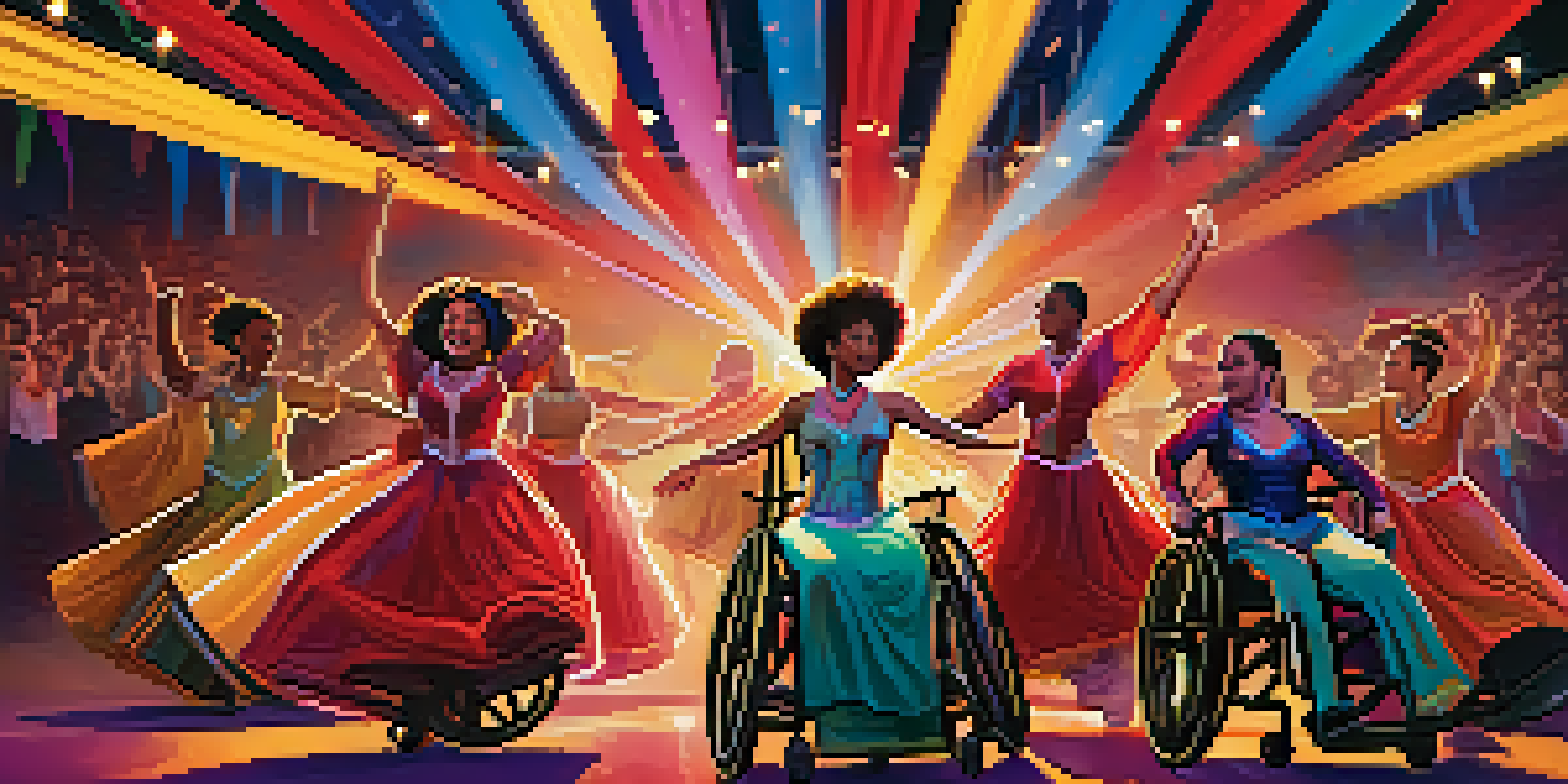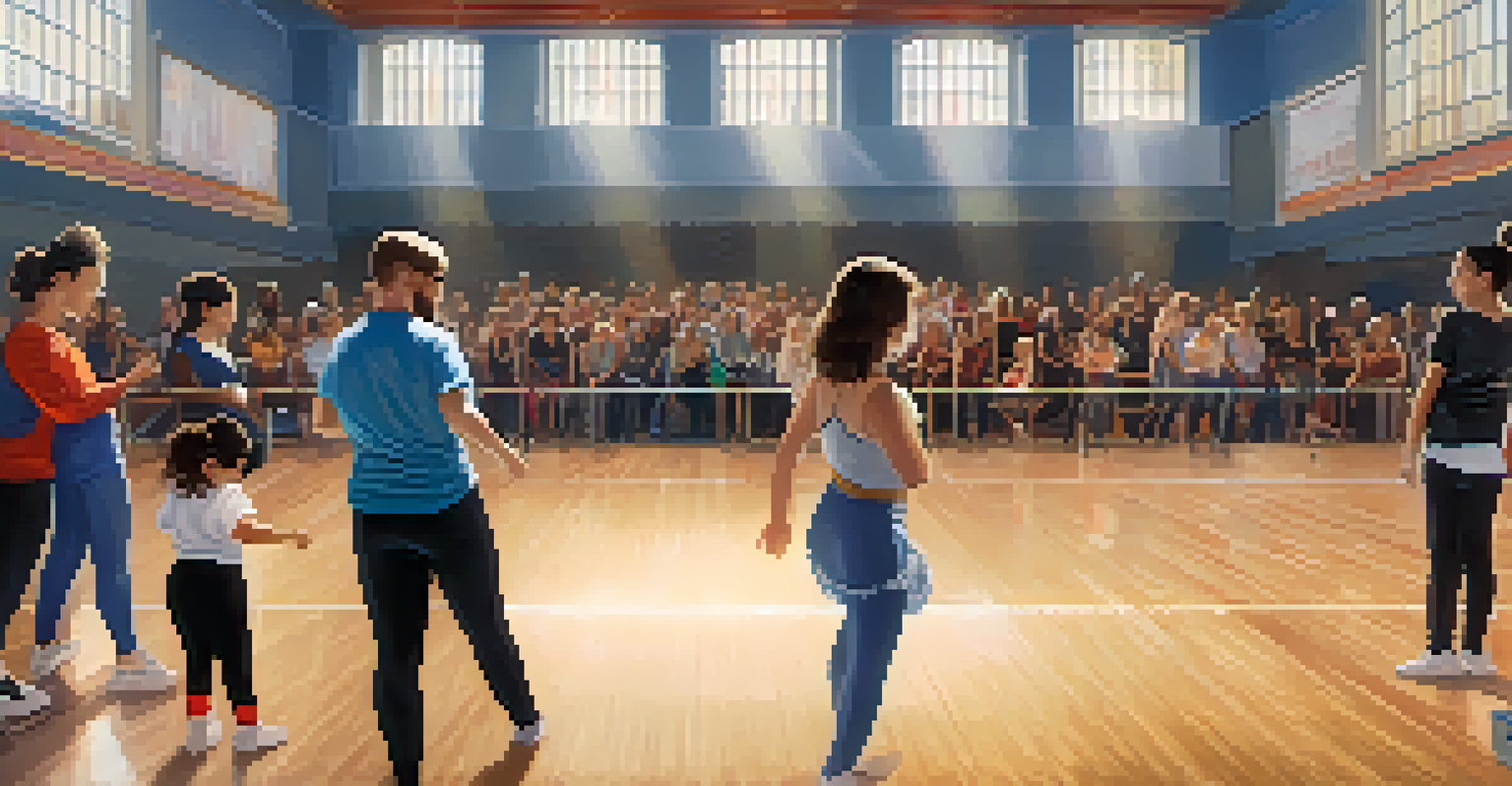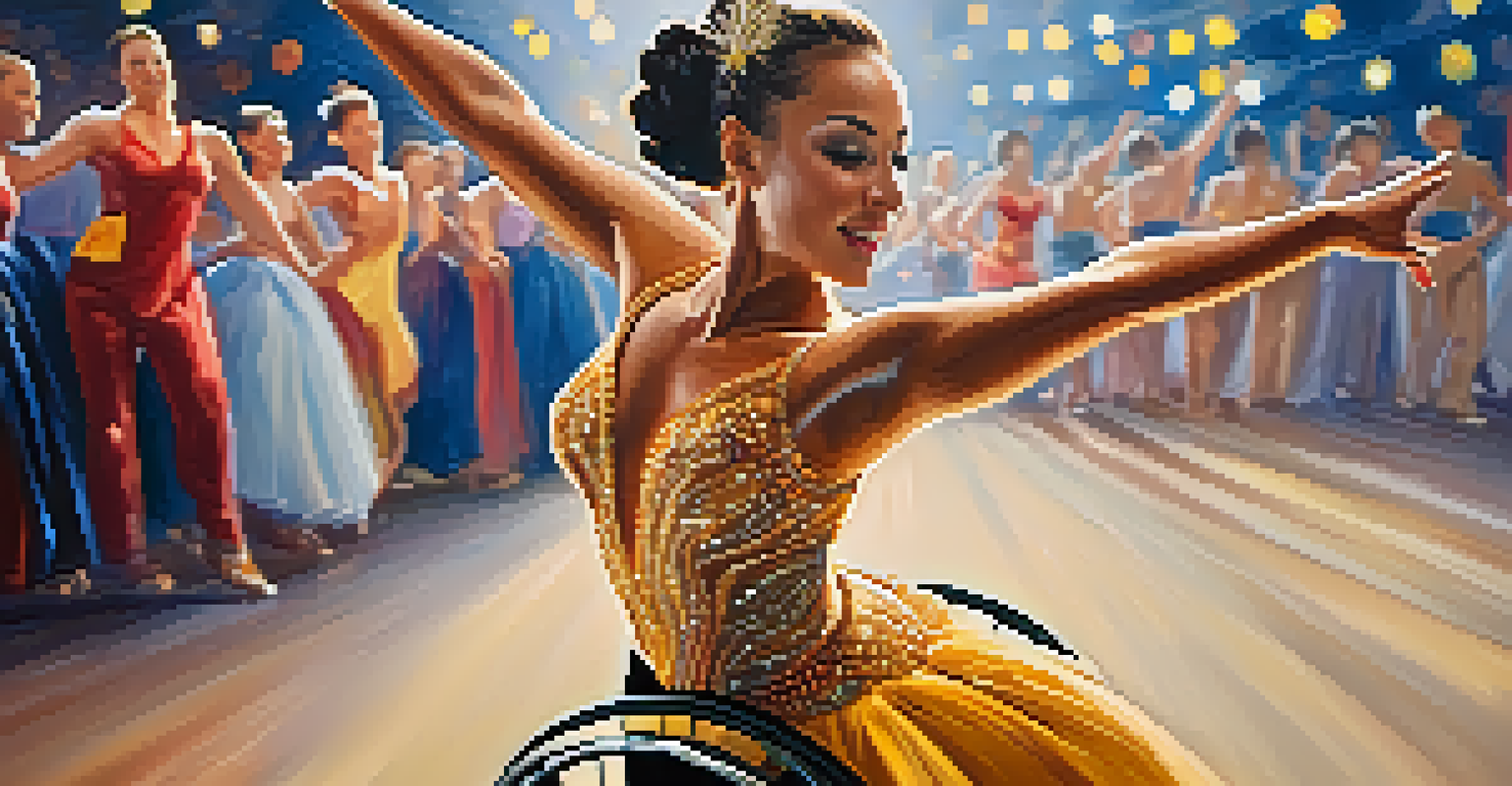Dance Competitions: Increasing Inclusivity for All Abilities

Understanding Inclusivity in Dance Competitions
Inclusivity in dance competitions means creating environments where everyone, regardless of ability, can participate and shine. It's about breaking down barriers that have historically excluded dancers with disabilities. By fostering a culture of acceptance, we can celebrate the diverse talents that individuals bring to the dance floor.
Diversity is not about how we differ. Diversity is about embracing one another's uniqueness.
When we think about inclusivity, we envision a space where each dancer feels valued and empowered. For instance, incorporating adaptive dance styles or classifications can help level the playing field. These changes not only enhance the experience for participants but also enrich the competition itself by showcasing a wider array of talent.
Ultimately, the goal is to ensure that all dancers have the opportunity to express themselves through movement. This inclusivity not only benefits dancers with disabilities but also educates audiences and competitors about the beauty of diversity in dance.
The Role of Dance Organizations in Promoting Inclusivity
Dance organizations play a crucial role in setting the tone for inclusivity in competitions. By implementing policies that prioritize accessibility, they can create a welcoming environment for all participants. This includes everything from physical access to venues to providing resources for adaptive choreography.

Moreover, organizations can offer training for judges and staff to ensure they understand the unique needs of performers with different abilities. This training can help foster a supportive atmosphere where all dancers feel acknowledged and appreciated. When judges are trained to recognize diverse forms of expression, everyone wins.
Accessible Venues Are Essential
Designing venues with accessibility in mind ensures that all participants can compete and feel welcome.
Incorporating inclusive practices not only enhances the competition experience for all but also encourages more dancers to participate. As more organizations adopt these values, we pave the way for a future where inclusivity is the norm, not the exception.
Adaptive Dance Styles: Expanding the Dance Vocabulary
Adaptive dance styles are essential for inclusivity, as they cater to various abilities while celebrating individuality. These styles may include wheelchair dance, dance with crutches, or even seated dance, each offering unique ways for dancers to express themselves. By expanding the dance vocabulary, we invite everyone to find their rhythm.
Inclusion is not a matter of political correctness. It is the key to growth.
For instance, wheelchair ballroom dancing has gained popularity, allowing competitors to showcase their skills in a traditional format while adapting movements to suit their needs. This not only empowers dancers with disabilities but also challenges perceptions of what dance can be. It shows that creativity knows no bounds.
Embracing adaptive dance styles enriches competitions and encourages the exploration of new forms of artistry. When dancers of all abilities come together, they create a vibrant tapestry of movement that highlights the beauty of diversity in dance.
Creating Accessible Venues for All Competitors
Accessibility is a fundamental aspect of inclusivity in dance competitions. It's vital that venues consider the needs of all participants, from parking spaces to restroom facilities. When a venue is designed with accessibility in mind, it sends a strong message: everyone is welcome here.
For example, having ramps, elevators, and designated seating can make a significant difference for dancers with mobility challenges. Additionally, providing clear signage and assistance can help everyone navigate the space comfortably. A well-planned venue not only supports competitors but also enhances the overall experience for audiences.
Inclusivity Enhances Dance Competitions
Creating inclusive environments allows dancers of all abilities to participate and showcase their unique talents.
Investing in accessible facilities is not just a legal obligation but a moral imperative. By prioritizing accessibility, we ensure that dance competitions are open to all, allowing every dancer to shine in their own way.
Judging Criteria: Recognizing Diverse Talents
Judging criteria in dance competitions must evolve to appreciate the diverse abilities of all dancers. Traditional criteria may not adequately assess the creativity and skill of performers with disabilities, leading to an unbalanced playing field. By adapting these criteria, we can ensure fair evaluations for everyone.
For instance, judges could consider elements like adaptability and innovation, which may be more relevant for dancers using adaptive techniques. This shift can help recognize the unique challenges faced by these competitors while still celebrating their artistry. A more inclusive judging process fosters a sense of belonging among all participants.
Ultimately, fair judging practices promote a healthier competitive environment, encouraging dancers to express themselves without fear of being overlooked. When every dancer feels seen and appreciated, the entire dance community benefits.
Showcasing Inclusive Dance Competitions
Highlighting inclusive dance competitions can inspire communities to embrace diversity in the art form. Events like the DanceAbility Festival showcase performers of all abilities, allowing them to share their passion with broader audiences. These showcases not only celebrate talent but also educate others about the importance of inclusivity.
Social media plays a significant role in promoting these events and sharing the stories of inspiring dancers. By capturing performances and behind-the-scenes moments, we can create a sense of connection and community. When people see the powerful expressions of diverse dancers, it shifts perceptions and encourages more inclusive practices.
Adaptive Dance Styles Expand Participation
Incorporating adaptive dance styles enables diverse forms of expression and enriches the overall competition experience.
As the visibility of inclusive competitions grows, so does the opportunity for change within the dance community. By showcasing these events, we can motivate others to adopt similar practices and foster a culture of acceptance.
The Future of Dance Competitions: A Vision for Inclusivity
Envisioning the future of dance competitions involves a commitment to inclusivity as a core value. As more organizations, venues, and judges embrace diverse abilities, we can create environments where every dancer feels empowered. This vision requires ongoing collaboration and dedication from the entire dance community.
Consider how we can continue to innovate and adapt to ensure that all dancers can participate meaningfully. By incorporating feedback from dancers with disabilities, we can identify areas for improvement and implement changes that enhance the experience for everyone. This collaborative approach fosters a sense of ownership and shared responsibility.

As we look ahead, let’s imagine a world where inclusivity is not just an ideal but a reality. By working together, we can transform dance competitions into vibrant celebrations of talent, creativity, and connection, ensuring that everyone has a place on the dance floor.